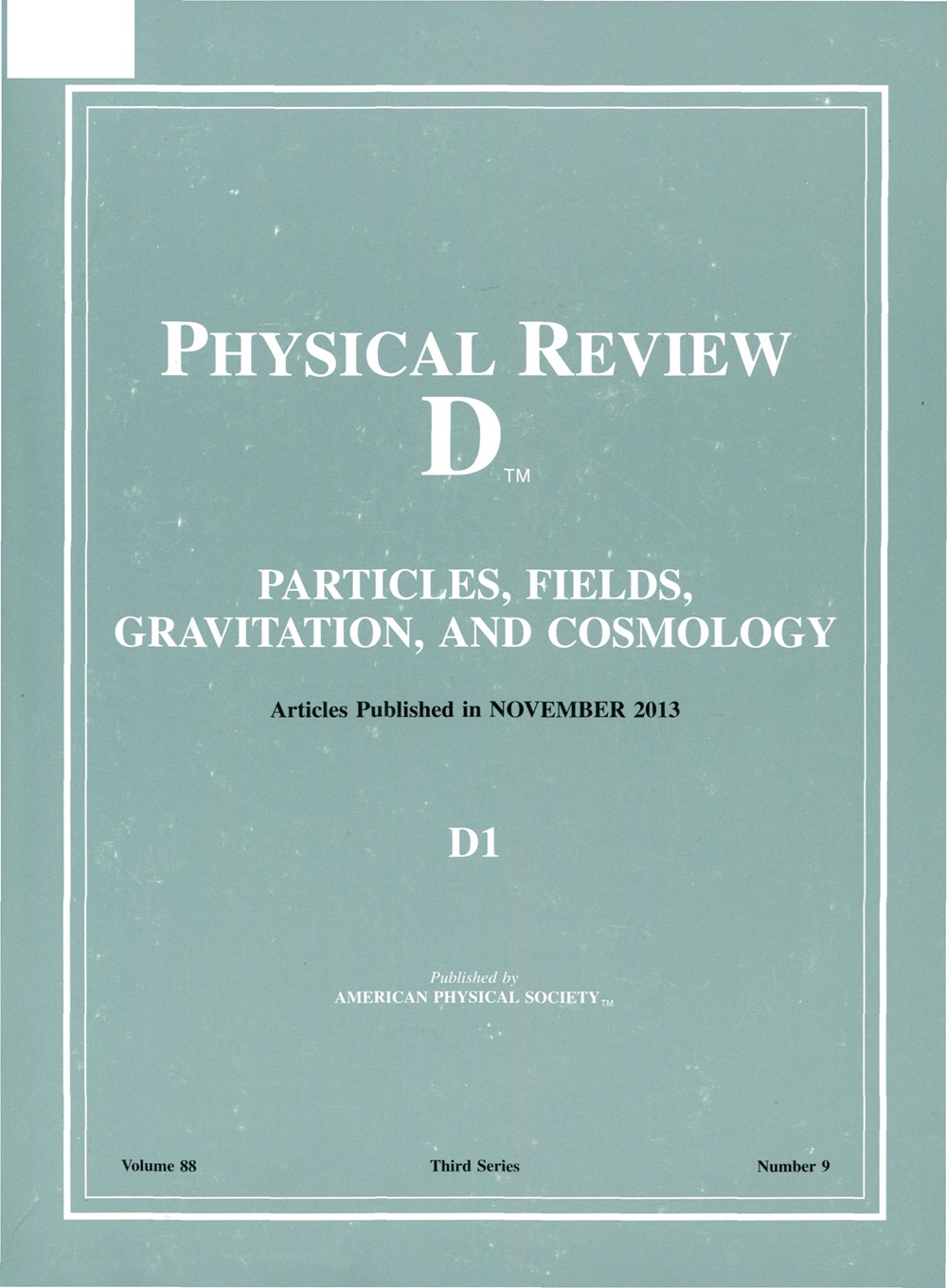量子纠缠中基本粒子的味道模式?
IF 5.3
2区 物理与天体物理
Q1 Physics and Astronomy
引用次数: 0
摘要
Cabibbo-Kobayashi-Maskawa (CKM)矩阵控制着三代夸克费米子之间的味道混合,是粒子物理标准模型的关键输入。在本文中,我们发现了量子纠缠和夸克混合程度之间的惊人联系。关注电弱玻色子介导的2→2夸克散射的特定极限,我们发现当CKM矩阵几乎(但不完全)对角时,散射产生的量子纠缠最小,与观测结果定性一致。随着中微子质量和混合的发现,需要额外的角度来参数化轻子扇区的Pontecorvo-Maki-Nakagawa-Sakata (PMNS)矩阵。应用相同的逻辑,我们发现当PMNS矩阵具有两个大角度和一个小角度时,量子纠缠最小化,再次与观测结果在定性上一致,加上抑制CP违反的提示。我们推测(不太可能但诱人的)最小化量子纠缠的可能性可能是决定粒子物理输入参数的基本原理。2025年由美国物理学会出版本文章由计算机程序翻译,如有差异,请以英文原文为准。
Flavor patterns of fundamental particles from quantum entanglement?
The Cabibbo-Kobayashi-Maskawa (CKM) matrix, which controls flavor mixing between the three generations of quark fermions, is a key input to the standard model of particle physics. In this paper, we identify a surprising connection between quantum entanglement and the degree of quark mixing. Focusing on a specific limit of 2→2 quark scattering mediated by electroweak bosons, we find that the quantum entanglement generated by scattering is minimized when the CKM matrix is almost (but not exactly) diagonal, in qualitative agreement with observation. With the discovery of neutrino masses and mixings, additional angles are needed to parametrize the Pontecorvo-Maki-Nakagawa-Sakata (PMNS) matrix in the lepton sector. Applying the same logic, we find that quantum entanglement is minimized when the PMNS matrix features two large angles and a smaller one, again in qualitative agreement with observation, plus a hint for suppressed C P Published by the American Physical Society 2025
求助全文
通过发布文献求助,成功后即可免费获取论文全文。
去求助
来源期刊

Physical Review D
物理-天文与天体物理
CiteScore
9.20
自引率
36.00%
发文量
0
审稿时长
2 months
期刊介绍:
Physical Review D (PRD) is a leading journal in elementary particle physics, field theory, gravitation, and cosmology and is one of the top-cited journals in high-energy physics.
PRD covers experimental and theoretical results in all aspects of particle physics, field theory, gravitation and cosmology, including:
Particle physics experiments,
Electroweak interactions,
Strong interactions,
Lattice field theories, lattice QCD,
Beyond the standard model physics,
Phenomenological aspects of field theory, general methods,
Gravity, cosmology, cosmic rays,
Astrophysics and astroparticle physics,
General relativity,
Formal aspects of field theory, field theory in curved space,
String theory, quantum gravity, gauge/gravity duality.
 求助内容:
求助内容: 应助结果提醒方式:
应助结果提醒方式:


